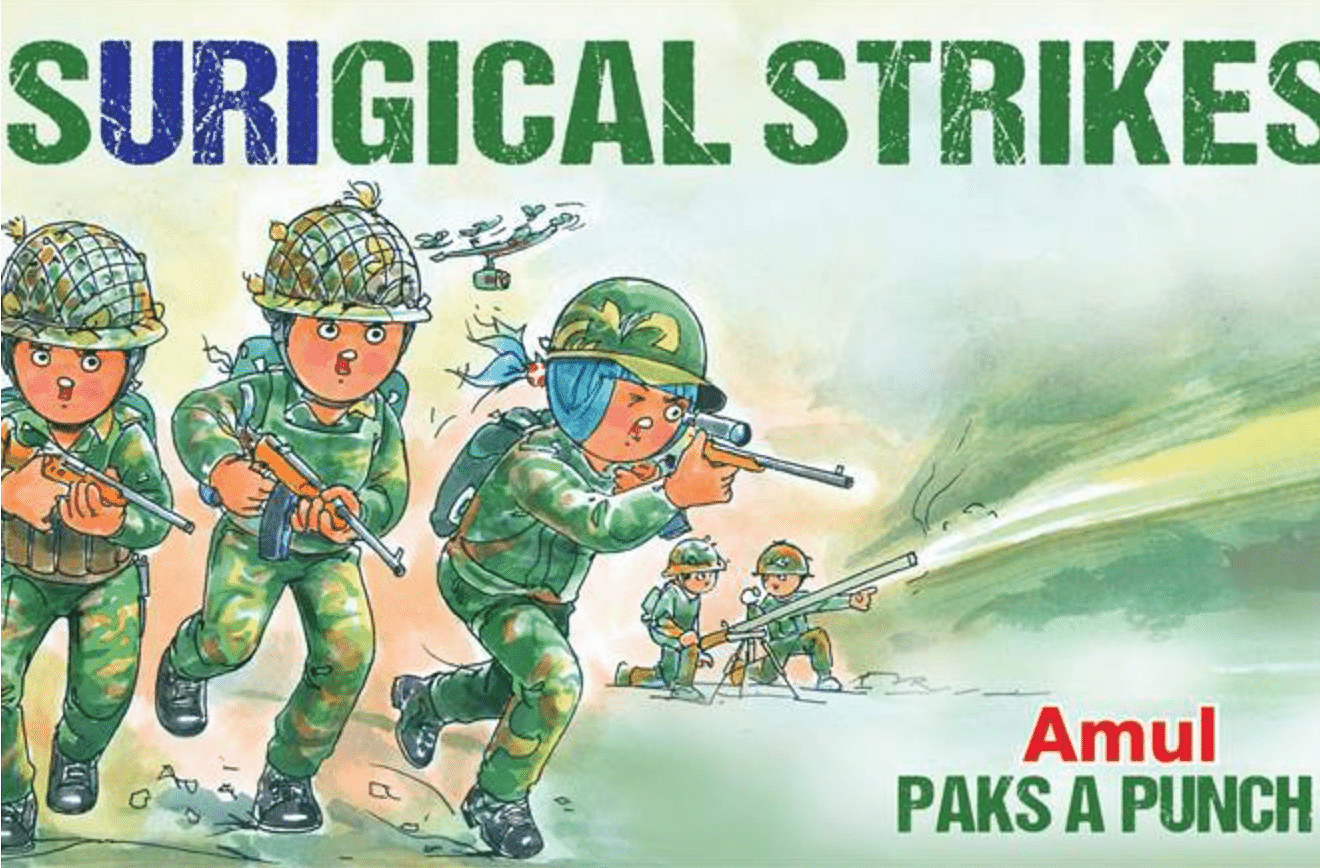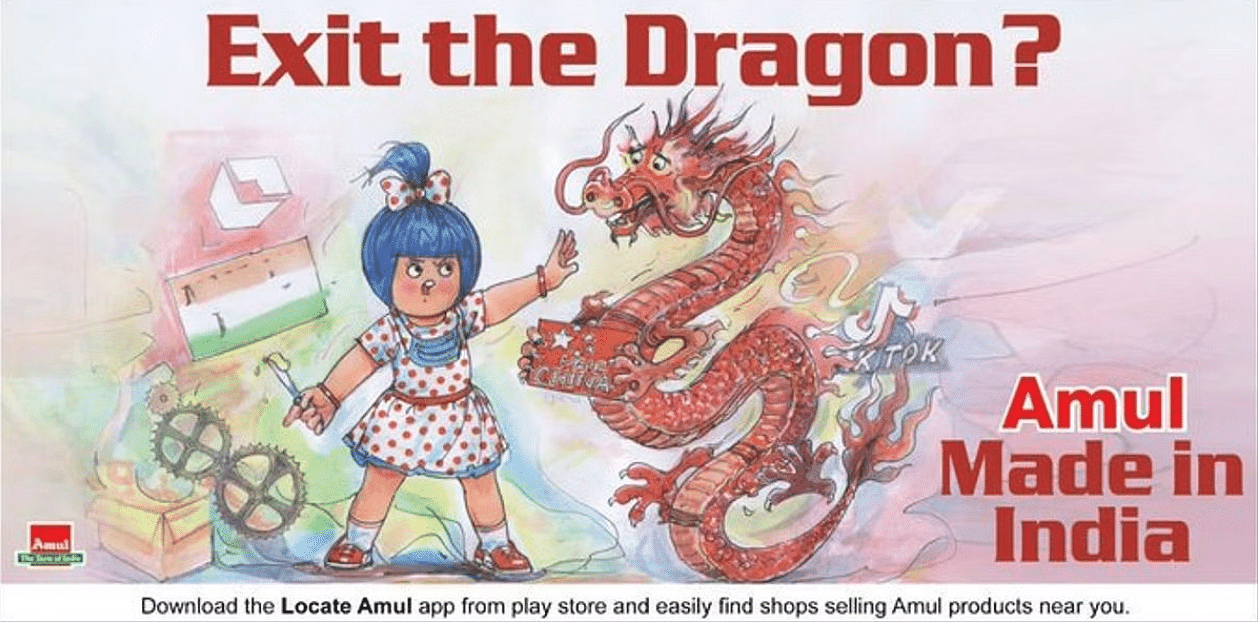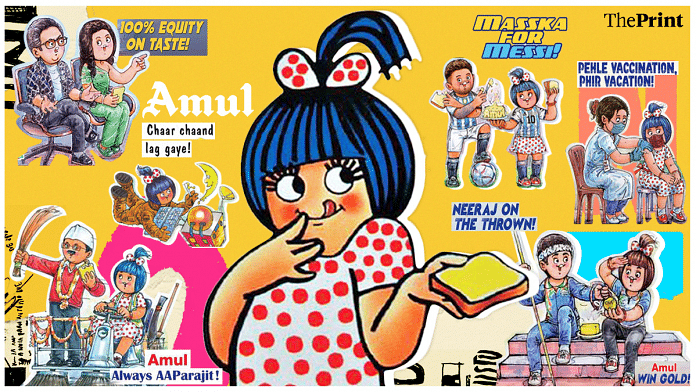New Delhi: After cartoonist R.K. Laxman’s ‘The Common Man’, it’s the Amul Girl who has tied herself to the Indian cultural landscape. A ubiquitous presence in every household, the enduring legacy of the Amul Girl exists in her adaptability. She is seamlessly inserted into every news item, social commentary, or political development. She is the original meme – adding warmth and humour to social commentary.
First sketched by art director Eustace Fernandes of Mumbai’s ad agency daCunha Communications – the beloved Amul girl was born in 1966 when Verghese Kurien was looking to build an ad campaign for Amul Butter, which he had started about a decade ago.
The blue-haired girl with her cheeky smile went on to become an advertising icon, resonating with generations of Indians. However, it is not simply the figure of the Amul Girl, it is the cultural moment she finds herself in.
From the release of the latest films – when the Amul girl and her male counterpart were painted blue in support of the Hollywood blockbuster Avatar, to Argentina winning the FIFA World Cup final, there is nowhere she doesn’t fit.
Moment marketing – capturing the zeitgeist
Today, Amul Girl is a social media darling with an opinion on everything. A sleek marketing approach coupled with heavy reliance on puns allows the cartoon to blend into any event in India’s public life and bring Amul into the headline of the week.
“The Amul girl is a brand identity. Amul uses moment marketing effectively and efficaciously,” Shavon Barua, an independent brand consultant, who was previously the chief client officer of ad agency PHD India, told ThePrint.
Moment marketing is defined as “a promotional technique based on trending news, events or instances; used primarily by brands on social media and digital platforms to gain traction and benefits brand awareness and sales.”
While Amul hardly needs assistance in the sales department, given its hold over the Indian consumer, its wily usage of moment marketing has ensured that it consistently remains in the cultural consciousness of its audience. Each Amul cartoon serves as a reminder of the brand.
“At some point, I think dad realised that just talking about butter wouldn’t sustain itself for long. So he hit on this idea of social commentary. At a certain point, it went from commenting on one topic a month, or every two months, to what we do now — which is literally looking at a topic almost every day,” said adman Rahul daCunha, son of daCunha communications founder Sylvester daCunha, in an interview with Muse.
It is the younger daCunha who was responsible for creating the Amul Girl in her current avatar.
“We are actively seeking the here and now. Brand content needs to be quick-witted. That’s what the consumer enjoys. That’s what resonates with the consumer,” Barua, who has over two decades of experience in the field, believes.
Other brands have tried this too. They may not do with the consistency of Amul, but names like Durex also feed on the social reality of their consumers. The condom brand popularised hashtags like #EndBedroomDistancing, a nod to pandemic induced social-distancing. What Amul does effectively, Durex does too, albeit in a different form. However, both strive to be part of the conversation.
Taking stances, Amul’s progression over the years
There is also the question of what Amul is signalling through its ads. In 2016, when India said it had conducted surgical strikes against terrorist camps in Pakistan Occupied Kashmir, in response to an attack on an army base in Kashmir’s Uri. Concrete details remain unknown but public opinion had already been framed.
Amul did their bit, depicting the Amul girl as a soldier brandishing a gun, aiming her next shot. “SURIgical Strikes! Amul Paks a punch,” reads the ad.

Amul seldom shied away from taking stances. In 1976, during the Emergency, the Amul girl donned a nurse’s uniform, holding out a dollop of butter, licking her lips. The tagline read: “We’ve always practiced compulsory sterilisation,” a dig at Sanjay Gandhi’s controversial family planning programme.

More recently in 2020, an Amul Girl cartoon had a message to boycott Chinese products,saying ‘Exit the Dragon’.

However, some reports claim that Amul is afraid to go against the current government, and its ads are suffering as a result.
An article in The Wire says that Amul’s ads in the last few years “are very close to the government’s and the BJP’s views.” The piece gives the example of the Amul Girl, as shown in front of the Ayodhya temple in 2020, It is captioned – “Monumental occasion. All are invited.”
Despite all the scrutiny of its ads, instances of Amul Girl ‘disappointing’ the general masses are rare.
“Amul stands for its simple messaging. It never tried to be clever. The communication of the product mirrors its simplicity,” Barua says.
Known for household staples like butter, Amul is relished by consumers for its comforting sameness. Life may be tumultuous, and the world may be shifting on its axis – but Amul and the Amul girl remain constant.
Also read: Inhalers to cough drops or soothing balm — Winter is here and it smells like Vicks VapoRub



